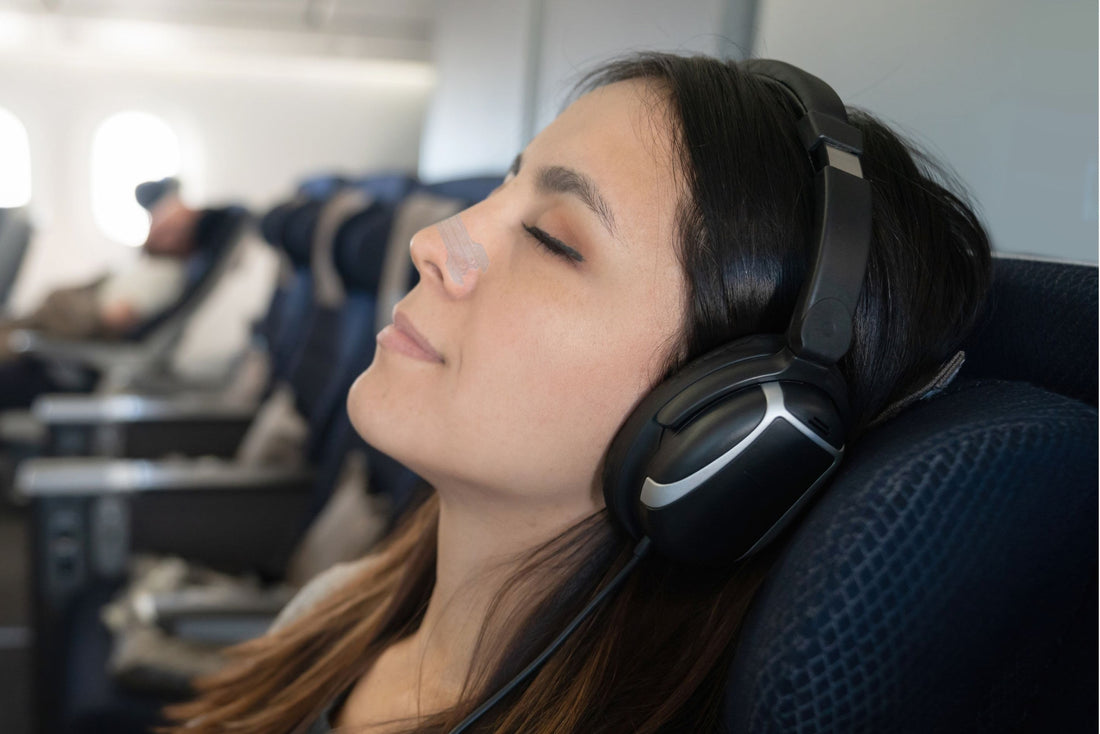
How to Sleep on a Plane: Tips for Beating Jet Lag
Share
Long flights and jet lag can make the start of your travels feel exhausting, but with the right strategies, you can sleep better on the plane and arrive feeling refreshed. Sleeping on a plane isn’t always easy, but it’s essential for reducing the effects of jet lag and staying energized during your trip. In this post, we’ll share expert tips to help you sleep on a plane and beat jet lag like a pro.
1. Choose the Right Seat
The first step to a good flight nap is selecting the right seat. If possible, try to book a window seat. This gives you something to lean against and prevents you from being disturbed by other passengers. Additionally, sitting near the wings of the plane, where there is less turbulence, can make for a smoother, more comfortable journey.
2. Use Neck Pillows and Blankets
A comfortable neck pillow is a game-changer when it comes to sleeping on a plane. It helps support your neck and keeps you from waking up with soreness. Consider using a U-shaped pillow or one that molds to your neck for optimal comfort. If your plane provides a blanket, use it to help create a cozy, relaxing environment. If not, pack a lightweight, travel-friendly blanket or shawl for warmth.
3. Block Out Noise and Light
Planes can be noisy and bright, which makes it harder to fall asleep. To block out sound, use noise-canceling headphones or earplugs. For light, wear a sleep mask to create complete darkness and signal to your body that it’s time to rest. These simple tools can make a huge difference in your ability to sleep.
4. Hydrate, But Avoid Caffeine and Alcohol
Stay hydrated during your flight by drinking plenty of water. Dehydration can make you feel sluggish and uncomfortable, especially during long flights. However, avoid drinking too much caffeine or alcohol, as these can disrupt your sleep patterns. Opt for water, herbal tea, or a hydrating electrolyte drink instead.
5. Stretch and Move Before Sleep
Before you settle in for a nap, do some light stretching and moving around. Walking up and down the aisle or doing simple stretches in your seat can improve circulation, reduce stiffness, and prepare your body for rest. Stretching helps alleviate any tension, making it easier to relax and sleep during the flight.
6. Adjust Your Sleep Schedule Gradually
If you’re crossing multiple time zones, try to adjust your sleep schedule a few days before your flight. If possible, gradually shift your bedtime to match the time zone of your destination. This can help minimize jet lag and make it easier to sleep on the plane. On the day of the flight, aim to sleep during your destination's nighttime hours to sync your body’s internal clock.
7. Use Relaxation Techniques
If you’re struggling to sleep, try relaxation techniques like deep breathing, progressive muscle relaxation, or meditation. Guided meditations or calming playlists can help you unwind and ease into sleep. Apps like Headspace or Calm offer great options for quick meditation sessions that can help you relax while on the plane.
8. Consider Sleep Aids (When Necessary)
If you’re still having trouble sleeping, you might want to consider using natural sleep aids like melatonin, which can help regulate your sleep cycle and make it easier to fall asleep. Always consult your doctor before using any sleep supplements, especially if you have underlying health conditions or are taking other medications.
9. Nose Strips for Better Breathing
If you suffer from congestion or find it hard to breathe through your nose during the flight, using a nasal strip can be a lifesaver. A nasal strip gently opens your nostrils, improving airflow and making it easier to breathe deeply and comfortably while you sleep. This can help reduce snoring, improve oxygen intake, and make it easier to fall into a deep, restful sleep during your flight.
10. Avoid Screens Before Sleeping
The blue light emitted by smartphones, tablets, and laptops can interfere with your body’s natural production of melatonin, the hormone that regulates sleep. Try to avoid using screens at least 30 minutes before you plan to sleep. Instead, focus on activities that help you relax, like reading a book or listening to calming music.
11. Get Moving After the Flight
Once you arrive at your destination, get some fresh air and sunlight. This will help reset your circadian rhythm and ease the effects of jet lag. If you need to sleep after your flight, try to take a short nap (no longer than 30 minutes) to recharge without disrupting your ability to sleep at night.
Conclusion
Sleeping on a plane can be challenging, but with a few simple tips and tricks, you can improve your chances of getting quality rest and arriving at your destination feeling refreshed. Whether you’re looking to beat jet lag or just catch up on some sleep during a long flight, the key is to create a comfortable, calming environment and adjust your routine to help your body adapt. At Good Moon, we believe that rest is an essential part of travel, and we’re here to help you make the most of every journey.
